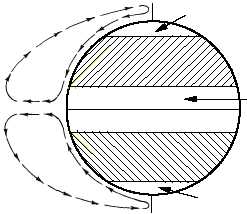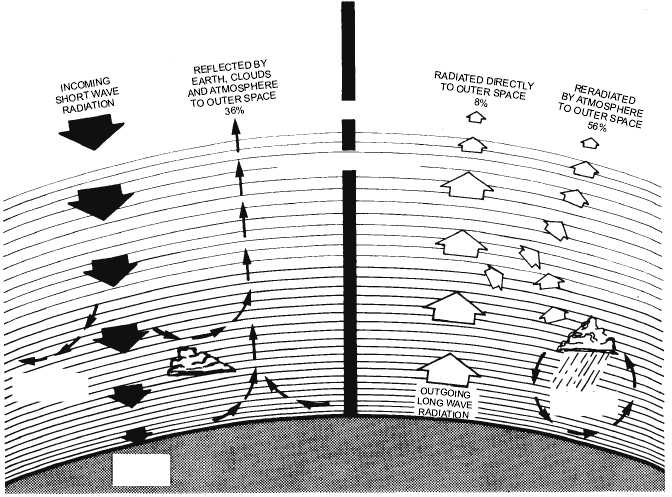Due to this differential insolation the tropical
atmosphere is constantly being supplied heat and the
temperature of the air is thus higher than in areas
poleward. Because of the expansion of warm air, this
column of air is much thicker and lighter than over the
poles. At the poles Earth receives little insolation and
the column or air is less thick and heavier. This
differential in insolation sets up a circulation that
transports warm air from the Tropics poleward aloft and
cold air from the poles equatorward on the surface. (See
fig. 1-8.) Modifications to this general circulation are
discussed in detail later in this training manual.
This is the account of the total radiation. Some of
the radiation makes several trips, being absorbed,
reflected, or reradiated by Earth or the atmosphere.
Insolation comes into the atmosphere and all of it is
reradiated. How many trips it makes while in our
atmosphere does not matter. The direct absorption of
radiation by Earth and the atmosphere and the
reradiation into space balance. If the balance did not
exist, Earth and its atmosphere, over a period of time,
would steadily gain or lose heat.
Although
radiation
is
considered
the
most
important means of heat transfer, it is not the only
method.
There
are
others
such
as
conduction,
convection, and advection that also play an important
part in meteorological processes.
1-11
OUTER SPACE
UPPER ATMOSPHERE
AGf0107
NOTE:
36% OF INCOMING INSULATION
INITIALLY REFLECTED
51%
ABSORBED
BY EARTH
13%
ABSORBED BY
ATMOSPHERE
HYDROLOGIC
CYCLE
Figure 1-7.—Radiation balance in the atmosphere.
NORTH
POLE
SOUTH
POLE
EQUATOR
AREA OF
GREATEST
INSOLATION
AREA OF LEAST
INSOLATION
AREA OF LEAST
INSOLATION
AGf0108
Figure 1-8.—Beginning of a circulation.




